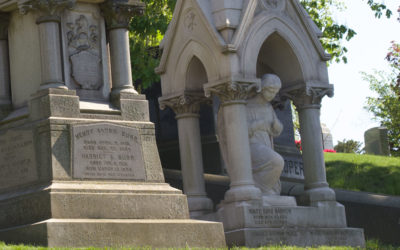Music and Meaning
and More
Music and Meaning: Philosophy Light
The question of music’s meaning has had a long and contentious history. Some say that music has no meaning other than itself, that the meaning of a piece of music, from the simplest song to the most complex symphony or opera, is simply the notes the composer wrote in the order they were written. When asked for the meaning of a musical work from this standpoint, a composer simply points to the score, or begins performing it. Words of explanation are extraneous, irrelevant.
A counterview holds that the meaning of music, if not fully explainable, can at least be approached through language. Hence the many books about the elements of music, its history and forms, composers’ and performers’ lives and times, analyses and interpretations of their works and performances, that have been written to explain music’s power, beauty, and meaning.
The reality, I believe, lies somewhere in between.
In The Joy of Music, Leonard Bernstein identifies three levels of meaning in music. The first involves narrative or literary meaning—the story that some music tells. Examples include symphonic works that were composed specifically to “tell” a story in music, such as Modest Mussorgsky’s Night on Bald Mountain and Richard Strauss’s Till Eulenspiegel’s Merry Pranks. One of the most popular examples is The Sorcerer’s Apprentice, a musical tone poem by Paul Dukas based on a work by the German poet Johann Wolfgang von Goethe. Goethe’s fourteen-stanza ballad involves a conflict between good and evil forces represented by benign and malevolent sorcerers. These clashing forces, which Dukas describes in musical terms, form the score of Walt Disney’s animated film, Fantasia, with Mickey Mouse as the sorcerer’s apprentice.
Bernstein’s second level of meaning, the “atmospheric-pictorial,” can be heard in works like Claude Debussy’s La Mer (“The Sea),” Modest Mussorgsky’s Pictures at an Exhibition, and many works by Spanish composers who depicted their country’s temper, spirit, and locales in evocative piano, guitar, and symphonic pieces. Examples also include Manuel de Falla’s Nights in the Gardens of Spain and Isaac Albeniz’s Suite Espagnola, and Chants d’Espagne.
Bernstein’s third category is “affective-reactive meanings,” which include emotional responses to music, such as cheerfulness, melancholy, pain, triumph, and joy. Examples include overtures to many nineteenth-century operas, as well as symphonic works by Mozart and Schubert, among many other composers, as well as popular songs, from country ballads to the blues.
Even though we can never fully explain a work of music with words, language does, nevertheless, deepen our understanding and enhance our appreciation of music. That’s why we read music histories and biographies, studies of composers and their works, articles and books about performers. And if we can’t ever completely explain music in words, we can approach and approximate what music means for us in general and what meanings we make of particular works. Words help clarify our feelings about music.
Music is feeling as much as sound, suggestsx Wallace Stevens in his poem “Peter Quince at the Clavier.” Hearing music is an emotional experience as much as or even more than an intellectual one. That’s one of the reasons Plato distrusted music. Music also possesses social value and meaning—its communal consolidating power to bring people together, augmented by music’s powerful therapeutic effects, relieving stress, enhancing pleasure, expanding our imaginative experience of life’s possibilities.
Music and Thinking: Competing Perspectives
Though difficult to describe in words, musical thinking is a way of thinking—using the imagination—with sounds, with musical tones, instead of words. When composers, performers, song-writers and other musically minded individuals engage in musical thinking, they think with their aural imagination rather than their verbal or visual imagination. Where Tchaikovsky thought primarily with melody, Brahms did so first harmonically. Tchaikovsky’s works tend to suggest horizontal melodic thinking; Brahms’s reveal a penchant for vertical harmonic texture. It’s a matter of differing emphases since both composers, of course, wrote both melodically and harmonically.
Musical thinking is conveyed with and through music. Bach’s contrapuntal musical thinking differs from Mozart’s as Mozart’s differs from the musical thinking of Beethoven and Brahms, Bartok and Stravinsky, all of whom exploited counterpoint in different ways. And yet there is common ground, too, among musical ideas, among the musical thinking even of composers whose works veer off and away from the traditional classical forms established in the seventeenth through nineteenth centuries. Some works by Charles Ives, Alban Berg, Aaron Copland, Arnold Schoenberg, Pierre Boulez, Olivier Messiaen, and Philip Glass, to name just a few, though vastly different stylistically from the musical expressions of their predecessors (and from one another), nonetheless share many common features of their musical language. And what goes for the music of classical composers obtains in equal measure for composers and performers of other musical styles across genres and cultures and historical periods. The Beatles’ musical thinking, for example, mixed musical styles and genres, stretched their and our musical imaginations, pushing the limits of what is musically possible—in the popular, of course, rather than the classical musical realm.
In Panaesthetics, Daniel Albright suggests that music is less an art of expression than an art of speech, but one that, paradoxically, verges on speechlessness. Music insists and repeats. It develops and elaborates. It starts and stops, begins and ends, and fills up the middle, just as a speech or an essay does.
When we listen to a song or a symphony, we await its opening words and notes, and we listen for where those words and notes will go and how they will get there. We attend to how the piece of music ends, as we expect it to conclude and not simply stop. These are all aspects of music’s meaning: music’s meaning in the narrative mode, the rhetorical mode, the dramatic mode.
Music has something to say, but the something it says is not external but rather to be found in the music itself. The story music tells is about itself; the argument it makes is reflexive; the drama it enacts is a musical drama. The problem for us as listeners is to balance our need for music to mean something other than itself and our sense of what we understand any music to mean on its own strictly musical terms.
Music is also drama. There is no pure music more dramatic for me than the music of Beethoven. The dramatic opening of his Symphony #5, for example, grabs our attention; its middle sustains our engagement; its closing with its multiple false endings, its long coda, forcefully concludes what Beethoven communicates, musically, while the movement lasts. And to suggest additional examples of musical drama in Beethoven’s music, we can look not only to his other symphonies, but also to his set of thirty-two piano sonatas. Among those that come to mind immediately are the “Pathetique” and the “Appassionata” sonatas.
And music, too, is story–music in the narrative mode. Beethoven’s fifth symphony, along with his third, sixth, seventh, and ninth symphonies are deeply implicated in story—both the story that the music of these great symphonies itself “tells,” as well as a story about the music that we concoct and imagine. This is equally true of Beethoven’s piano sonatas, which have been provided with evocative titles, such as “Moonlight” and “Les Adieux.”
We might add one additional kind of musical message—the political. One famous example from the classical repertoire is the tone poem Finlandia by the Finnish composer Jan Sibelius. This work was played during Russia’s occupation of Finland. It was used to rouse the patriotic fervor and the nationalistic spirit of the Finns in sabotaging the Russian occupation.
Another example is the national anthem of a country, which carries with it meaningful appeals to patriotism and references to a country’s important historical events. “The Star Spangled Banner,” of course, is the example Americans know best, as it is played before professional sports events and at the Olympic games when American athletes win medals. The traditional messages associated with a country’s national anthem, however, can be altered, even in potentially subversive ways, as Jimi Hendrix demonstrated at Woodstock when his rendition of the national anthem reminded listeners less of glorious battles won than of the lives lost in wars, as he spliced a version of “Taps” on to the anthem, as “Taps” is played at military funerals.
Music and Metaphor: Thinking Analogically
Music is inherently metaphorical. Musical pitches, for example, are high or low; melodically, they move along a line, up and down; harmonically, they cluster in relative degrees of textual thickness, creating both concord and discord. Rhythmically, too, music is metaphorical, with musical tempos described as moving briskly or slowly, for example, with passion (con brio), or at a walking pace (andante).
Metaphor and music enjoy yet other types of meaningful relationships. One of the more important is the way musical notes convey human feeling—joy and sorrow, for example, or tragedy and triumph. These relationships between music and metaphorical meaning, moreover, span the spectrum of musical styles and forms, from classical music to rock, from jazz to country, from R&B to rap and punk, from Gregorian chant to ragtime and the blues. All are metaphorically meaningful. At their best, the musical metaphors move both our hearts and our minds.
Literary works include musical metaphors and allusions. Examples include poems such as Walt Whitman’s “Song of Myself,” which employs epic conventions and celebrates song throughout; Wallace Stevens’ suite-like “Peter Quince at the Clavier”; Langston Hughes’ poems, which make extensive use of stylistic gestures found in jazz and blues; and novels such as Thomas Mann’s Doctor Faustus, Vikram Seth’s An Equal Music, and Ann Padgett’s Bel Canto, each of which makes music and musicians thematic preoccupations as well as essential elements of plot, character, and tone. Writers of these works describe music in ways that create form and convey feeling.
Literary works that mimic musical structures illustrate yet another relationship between music and metaphor—literary structure as musical structure. Besides the Whitman and Stevens poems just mentioned numerous other poems long and short can be described as musical, including T.S Eliot’s Waste Land, which is structured like a symphony in five movements; Ezra Pound’s Cantos, which employ numerous musical references and motifs; and Emily Dickinson’s lyrics, many of which exhibit the rhythmic patterns and metrical structure of Protestant hymns (though not their religious faith).
Among the more complex ways musical form inhabits literary works appears in the fugal textures of William Wordsworth’s “Tintern Abbey” and of William Faulkner’s “The Bear.” The intricacies of fugal structure inform the complex syntax of Wordsworth’s meditative poem and inflect Faulkner’s anti-chronological narrative, their polyphonic voices mimicking verbally this most complex of musical styles.
Writing About Music: Sound & Sense
It’s not easy to write about music, as the sounds of music are not readily translatable into the sound of sense. Yet good music writing can succeed in making sense in what it says directly about the music it describes, and in what it suggests indirectly, in what circumscribes the music, as well. Among those who have written well about music are professional musicians, such as Aaron Copland, Virgil Thompson, and Leonard Bernstein (on classical music) and writers who are good listeners, such as George Bernard Shaw, Bernard Haggin, and Whitney Balliett (on popular music and jazz). Here are a few examples. Shaw from The Great Composers:
A dance is a symmetrical pattern of steps that are pleasant to move to; and its music is a symmetrical pattern of sound that is pleasant to listen to even when you are not dancing to it. Consequently, the sound patterns, though they begin by being as simple as chessboards, get lengthened and elaborated and enriched with harmonies until they are more like Persian carpets; and the composers who design these patterns no longer expect people to dance to them. Only a whirling Dervish could dance a Mozart symphony. (19)
Bernstein from Young People’s Concerts:
Let’s just see who Tchaikovsky went about building up that lovely theme of his by simply repeating his ideas in a certain arranged order—what I like to call the 1-2-3 method. In fact so many famous themes are formed by exactly his method that I think you ought to know about it. Here’s how it works: first of all there is a short idea, or phrase: (musical quote)—second, the same phrase is repeated, but with a small variation: (musical quote)—and third, the tune takes off in a flight of inspiration: (musical quote). 1, 2, and 3—like a 3-stage rocket, or like the countdown in a race: “On your mark, get set, go!” Or in target practice: “Ready, aim, fire!” Or in a movie studio: “Lights, camera, action!” It’s always the same 1, 2, and 3! (16-18)
Balliett from New York Notes:
Taylor, as is his wont, played just one number, but it lasted forty minutes. It was full of his usual devices—the slamming chords, the agitated staccato passages, the breathtaking arpeggios, the blizzard density—but it had two new qualities: Lyricism and gentleness. Again and again, after Taylor had launched one of his tidal waves, his hands going up and down like driving rods, he slipped into clear lagoons where shadows of melody glided just below the surface. (26)
Thompson from Music Chronicles 1940-1954: Wanda Landowska’s harpsichord recital was “as stimulating as a needle shower.” Arthur Rubenstein at the piano is “authoritative, direct, and courteous, like the captain of a trans-Atlantic liner.” And describing the antics of Dimitri Mitropoulos conducting the New York Philharmonic:
He whipped it up as if it were a cake, kneaded it like bread, shuffled and riffled an imaginary deck of cards, wound up a clock, shook a recalcitrant umbrella, rubbed something on a washboard and wrung it out. Really, there were very few moments when a film taken of the conductor alone, without sound, would have given any clue to the fact that he was directing a musical composition. (All quoted from Anthony Tommassini, “An Essential Critic, but Not a Role Model,” The New York Times, July 31, 2016, p. AR 7.)
In a Queens College course on Writing about Music I taught in the late 1970s, I advocated for understanding how music and writing are related. As forms of composing, both writing and music often begin with a feeling or with an idea, conceptual or musical. The driving impulse in both forms of composition, musical and verbal, involves working from that feeling to find a form, developing that initial seed of musical or conceptual idea. The composer organizes language, whether in notes or in words, attempting to get somewhere, to arrive at a destination.
Writers and composers find forms for their feelings through play: writers play with words, sentences, paragraphs, and larger structures; composers play with notes, phrases, and longer musical patterns. Both types of composers play with the elements of their languages to discover and develop ideas. In the process, they communicate with others and with themselves.
Listeners and readers, too, enter the game of notes and the game of words. They play with what they hear and read, interpreting it, sizing it up, relating, elaborating, and putting things together in new ways, forming new meaningful wholes. And like creators of musical and verbal compositions, listeners and readers experience powerful feelings, which writers and musical composers evoke and elicit through their compositions verbal and aural.
What makes writing about music exacting yet exciting is the challenge of translating evanescent sounds with their intangible textures, colors and shades of feeling, into words, into language that conveys what it is like to hear those patterns of sound and what the sounds of music come to mean for us in the moment and long after. Successful writing about music navigates elegantly between sound and sense.
Music in Literature: Words & Music, Words as Music
In the decades I have taught poetry to college students, I have emphasized the connection of poetry to music, primarily with the teaching of brief lyric poems. Besides lyric, whose generic name harks back to the lyre, an early instrument used to accompany their performance, other kinds of literary works also include references to music. Among the earliest in the western tradition are the Homeric epics, the Iliad and Odyssey, which were chanted to the music of a lyre long before being written down. Some of the more famous and powerful scenes in the Odyssey are those in which its hero, Odysseus, weeps as he listens to a bard singing about the story of the Trojan War, which he has survived but from which he has not yet returned home.
I find particularly moving Homer’s description of Ulysses’s response to the bard, which demonstrates irrevocably music’s emotional power, a power and an impact matched only by literature itself, Homer’s Odyssey a compelling and incomparable example. In fact, it’s the power of words and music together that create an emotional synergy that has driven epic poetry for centuries across many languages and cultures. In smaller ways and on a more limited but equally extensive scale, this marriage of words and music in song affects us across musical genres from folk to rock, from hip-hop to classical lieder.
The power of music in literature, however, isn’t limited to epic and lyric poetry—to song in its various verbal and sonic manifestations. Fiction also capitalizes on music’s power. James Baldwin’s short story, “Sonny’s Blues,” for example, describes two African-American brothers whose lives have taken different directions, one a teacher, the other, Sonny, a drug-addicted jazz and blues pianist. At the end of this moving story Baldwin describes Sonny’s combo in action, with Sonny, who hasn’t played with them for years, struggling to find his musical stride. Slowly he begins to feel the music surge through him. The combo leader, Creole, gives Sonny room, silently urging him on, waiting with confident patience, until Sonny joins them in spirit as well as in sound. This musical communion Baldwin describes in richly metaphorical language, a language used also to suggest the rapprochement between Sonny and his more middle class brother, from whom he has been estranged:
Sonny began to play. Something began to happen. And Creole let out the reins. The dry, low, black man said something awful on the drums, Creole answered, and the drums talked back. Then the horn insisted, sweet and high, slightly detached perhaps, and Creole listened, commenting now and then, dry, and driving, beautiful and calm and old. They then all came together again, and Sonny was part of the family again. I could tell this from his face. He seemed to have found, right there beneath his fingers, a damn brand-new piano.
Music plays a different but comparably important role in James Joyce’s story, a novella really, “The Dead,” which concludes his book Dubliners. In a key scene that precipitates an epiphany for the protagonist, Gabriel Conroy, Joyce describes how Gabriel looks lovingly at his wife, full of desire for her, as she listens to a sorrowful ballad being sung at an annual Christmas party they are attending. Shortly afterwards, when the party is over and Gabriel and his wife, Gretta, are at their hotel, Gabriel listens as she tells him about a boy, Michael Furey, who she imagines died for love of her, and whose ghost is resurrected by the sad ballad about a dying girl that was sung at the party. Joyce combines lyrical prose with deep compassion in describing Gabriel’s mortifying vision of his awkwardness and insignificance, his painful understanding of his and Gretta’s doleful condition, and his realization that his aged aunts who hosted the party, will soon join the dead who have gone before them, as will the living, who one day will find themselves among those dead.
Joyce’s description of the snow failing in Dublin and throughout Ireland is a prose poem of exquisite beauty, musical lyricism, and unrivaled empathy. I have shared this ending with hundreds of students, always inevitably succumbing to its sheer beauty of sound and rhythm:
Yes, the newspapers were right: snow was general all over Ireland. It
was falling softly upon the Bog of Allen and, further west-wards, softly falling
into the dark mutinous Shannon waves. It was falling too upon every part of
the lonely churchyard where Michael Furey lay buried. It lay thickly drifted
on the crooked crosses and headstones, on the spears of the little gate, on the
barren thorns. His soul swooned slowly as he heard the snow falling faintly
through the universe and faintly falling, like the descent of their last end,
upon all the living and the dead.


Robert DiYanni
Author ⪢ | Professor ⪢ | Consultant ⪢
Robert DiYanni is a professor of humanities at New York University, having served as an instructional consultant at the NYU Center for the Advancement of Teaching and Center for Faculty Advancement. For these centers he conducted workshops and seminars on all aspects of pedagogy, consulted with faculty about teaching concerns, visited and observed classes, and provided a wide range of pedagogical consultative services. Professor DiYanni serves on the faculties of the School of Professional Studies and the Stern School of Business at NYU. He earned his undergraduate degree in English from Rutgers University, attended a Master of Arts in Teaching program at Johns Hopkins University, and received a Ph.D. in English Language and Literature from the City University of New York Graduate Center.
In addition to his work at NYU, Dr. DiYanni has taught at City University of New York, at Pace University, and as a Visiting Professor at Tsing Hua University in Taiwan and at Harvard University. As a high school teacher for four years and a college professor for more than four decades, Professor DiYanni has taught students from eighth grade through doctoral candidates. Most of his teaching, however, has been with college and university undergraduates. His numerous workshops, offered in more than twenty countries, have been attended by secondary school teachers and administrators, as well as by undergraduate college and university faculty and administrators.
Dr. DiYanni has written and edited numerous textbooks, among them, Literature: An Introduction; The Scribner Handbook for Writers (with Pat C. Hoy II); Arts and Culture: An Introduction to the Humanities, (with Janetta Rebold Benton), the basis for a series of lectures given at the Metropolitan Museum of Art; and Modern American Poets: Their Voices and Visions, which served as a companion text for the PBS television series Voices and Vision, which aired in the late 1980s.
You may also want to read these…
Comparing Poems
Comparison is one of the best ways of teaching anything; it is especially useful for reading and teaching…
The Widow of Ephesus
Once there was a certain married woman in the city of Ephesus, whose faithfulness to her husband…
Villanelle Variations
“I learn by going where I have to go,” writes Theodore Roethke in “The Waking.” “The art of losing…


